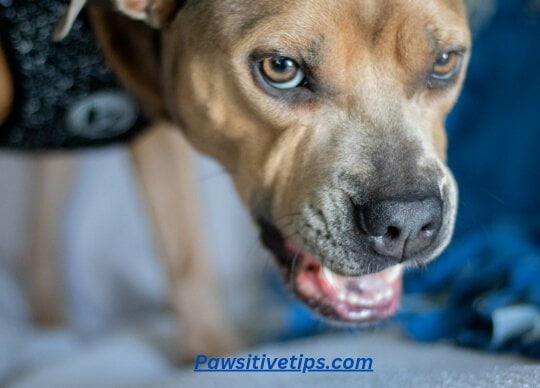The Secret to Saving Money on Dog Beds: How to Fix a Chewed Up Dog Bed in Minutes (2024)
For our Pawsitive guide for today, we have the secret to saving money on dog beds: how to fix a chewed up dog bed in minutes. It’s going to be the best guide you’ve ever gotten online. So keep reading for the full details.
If you’re a dog owner, you know all too well that dogs love to chew. Unfortunately, sometimes that means they chew up their beds, leaving you with a shredded mess. But don’t worry, there’s a solution: you can fix a chewed up dog bed and save yourself the money and hassle of having to buy a new one.
But before we move on to the topic, we have some interesting tips on how to stop your dog from destroying his bed in his crate. You might want to check them out.
How to Fix a Chewed-Up Dog Bed in Minutes
Here’s a comprehensive guide on how to fix a chewed-up dog bed.
Step 1: Assess the Damage
The first step in fixing a chewed up dog bed is to assess the damage. Look closely at the bed and identify the areas that are torn or ripped. Determine whether it’s a small tear that can be fixed with a quick patch or if the damage is more significant and requires a more extensive repair.
Step 2: Gather Your Materials
Once you’ve assessed the damage, it’s time to gather your materials. You’ll need a few things, including:
- Heavy-duty thread
- A sewing needle
- Scissors
- a patch (fabric or iron-on).
- Fabric glue
- Step 3: Sew the Tear
If the tear is relatively small, you can fix it by sewing it up. Thread your needle with heavy-duty thread and knot the end. Then, using a whip stitch, start sewing the tears together. Make sure to pull the thread tightly to close the tear completely. When you reach the end, knot the thread securely.
Step 4: Apply a Patch
If the tear is more significant or in an area that experiences a lot of wear and tear, you may need to apply a patch. Cut a piece of fabric or an iron-on patch slightly larger than the tear. Then, using fabric glue, apply the patch to the underside of the dog bed. Press firmly and let it dry completely before using the bed.
Step 5: Reinforce the Edges
To prevent your dog from chewing up the bed again, it’s important to reinforce the edges. Use heavy-duty thread to sew around the edges of the patch, making sure to secure it firmly in place. This will help prevent your dog from getting their teeth under the edge of the patch and tearing it up again.
But if you can’t do this and you feel you need a chew-proof dog bed, click the link for the best option available on the market.
Step 6: Protect the Bed
To further protect the bed, you can spray it with a chew deterrent spray. This will help deter your dog from chewing on it again.
FAQ: How to Fix a Chewed Up Dog Bed
Here are some frequently asked questions and answers related to the topic above.
How do I stop my dog from destroying his bed in his crate?
Answer: There are several possible ways to stop your dog from destroying his bed in his crate, including providing chew toys or bones, using a more durable bed, gradually increasing crate time, addressing any underlying anxiety or behavioral issues, and providing plenty of exercise and mental stimulation.
However, the best approach may depend on your dog’s individual needs and behavior, so it’s recommended to consult with a professional dog trainer or behaviorist for tailored advice.
What can I spray on my dog’s bed to stop chewing?
Answer: You can use a bitter apple spray or a similar pet-safe deterrent spray to discourage your dog from chewing on his bed. Simply spray the solution onto the bed and allow it to dry before letting your dog use the bed again.
Be sure to follow the manufacturer’s instructions and reapply the spray as needed. Additionally, providing your dog with appropriate chew toys or bones can redirect his chewing behavior to more appropriate objects. For full detail on this, check out Chew’s deterrent spray.
Why do dogs chew their dog beds?
Answer: Dogs may chew their dog beds for a variety of reasons. Chewing is a natural behavior for dogs, and some dogs may chew on their beds simply out of habit or boredom. However, other dogs may chew their beds due to anxiety, teething, or because they are trying to create a comfortable spot to rest.
It’s important for pet owners to provide their dogs with appropriate chew toys and regularly check their bedding for signs of wear and tear. Additionally, addressing any underlying behavioral or medical issues that may be causing the chewing behavior can also be helpful in preventing further damage to the dog’s bed.
At what age does a dog stop chewing?
Answer: Dogs have different chewing habits and behaviors, and there is no set age at which all dogs stop chewing entirely. Generally, puppies are more likely to chew frequently as they are teething and exploring their environment, while older dogs may have less of an urge to chew as they age.
However, it’s essential to note that some dogs continue to chew throughout their lives, especially if they have not been trained to redirect their chewing behaviors or if they suffer from anxiety or boredom.
Conclusion
In conclusion, a chewed-up dog bed doesn’t have to be the end of the line. With a few simple tools and materials, as highlighted above, you can easily fix the bed and make it good as new. Remember, the key is to act fast and address the issue as soon as possible. By following the above steps, you can save yourself time and money and keep your dog happy and comfortable.


